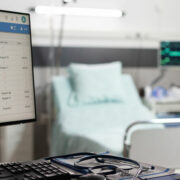Revolutionizing Healthcare: The Advancements in Telehealth and Remote Patient Monitoring

The landscape of healthcare has undergone a seismic shift with the advent of telehealth and remote patient monitoring (RPM). These technologies are not just fleeting trends but pivotal elements in the evolution of medical care, offering both new opportunities and challenges. This article provides an in-depth look at the progression, current state, and future directions of telehealth and RPM, underscoring their growing importance in today’s healthcare ecosystem.
The History of Telehealth
Telehealth’s journey began as an endeavor to reach patients in remote locations, evolving from basic telephone consultations to advanced video conferencing and remote diagnostics. The 2000s marked a significant turning point, fueled by internet advancements and the proliferation of digital devices. This evolution was both technological and conceptual, as telehealth began to encompass a wide array of services, from diagnosis to treatment and patient education. The historical trajectory of telehealth has been a tale of overcoming barriers, paving the way for the sophisticated systems in use today.
Current Telehealth Technologies
The current telehealth arena is characterized by its diversity and innovation. Video conferencing platforms now facilitate real-time consultations between patients and healthcare providers, bridging geographical divides. Wearable devices monitor vital signs, transmitting data directly to healthcare professionals. Mobile health applications empower patients to manage their health records and maintain communication with their caregivers. This technological landscape is reshaping patient-caregiver interactions, making healthcare more accessible and responsive.
Benefits of Remote Patient Monitoring
RPM stands as a beacon of progress in healthcare, offering numerous advantages. It fosters patient engagement and proactive health management, particularly beneficial in chronic disease management. By facilitating continuous monitoring, RPM allows for timely interventions, potentially reducing hospital readmissions and enhancing patient outcomes. Moreover, its role in expanding healthcare access, especially during global crises like the COVID-19 pandemic, underscores its significance in the modern healthcare infrastructure.
Challenges in Telehealth Implementation
Implementing telehealth on a wide scale presents several significant challenges. First and foremost is the digital divide: not all patients have access to the necessary technology or stable internet connections, leading to disparities in who can benefit from telehealth services. There’s also the issue of technological literacy; some patients, particularly the elderly, may struggle with using digital health tools. Healthcare providers face challenges, too, such as integrating telehealth into existing workflows and ensuring the reliability and accuracy of remote diagnostics. Data security is another major concern, as the transmission of sensitive patient information over the internet poses risks of breaches and unauthorized access. Furthermore, adapting telehealth to a wide range of specialties with specific requirements is a complex task. Overcoming these challenges requires concerted efforts from technology developers, healthcare providers, and policymakers.
Telehealth in Rural Areas
While telehealth has great potential in rural areas, its implementation here is beset with unique challenges. Rural communities often lack robust internet infrastructure, crucial for telehealth technologies. Additionally, there’s a scarcity of local healthcare providers who can follow up on telehealth consultations. However, the benefits in these areas are substantial. Telehealth can significantly reduce travel times for patients, who often have to travel long distances for specialized care. It also provides rural healthcare providers with a means to consult with specialists, enhancing the level of care available in these communities. Programs to improve internet connectivity and train local healthcare workers in telehealth are vital for realizing its full potential in rural settings.
Legal and Ethical Considerations
The legal and ethical landscape of telehealth is complex and constantly evolving. One major legal challenge is the issue of licensure: healthcare providers are typically licensed to practice in specific states, but telehealth often crosses state lines. This raises questions about jurisdiction and which state’s laws apply. There’s also the matter of ensuring equitable access to telehealth services, avoiding a situation where only those with certain technological means can benefit. Ethically, maintaining patient confidentiality and trust in a virtual setting is paramount. The use of AI and data analytics in telehealth raises further ethical considerations, such as bias in algorithms and the consent for using patient data. Navigating these legal and ethical waters requires careful consideration and, often, legislative action.
Future Trends in Telehealth
The future of telehealth is likely to be shaped by several emerging trends. One of the most significant is the integration of artificial intelligence and machine learning, which can provide more personalized care recommendations and improve diagnostic accuracy. Another trend is the increasing use of wearable devices that continuously monitor patients’ health, providing a wealth of data for proactive care management. The role of patient care technicians is also evolving in this landscape; they are increasingly involved in guiding patients in the use of telehealth technologies and ensuring the accuracy of data collected remotely. Additionally, there’s a growing focus on mental health, with telehealth providing a vital platform for delivering mental health services, particularly in underserved or stigmatized communities. The future of telehealth is not just about technological advancements but also about integrating these technologies into patient-centered care models, making healthcare more accessible and efficient for all.
Telehealth and remote patient monitoring represent more than just interim solutions in healthcare; they are foundational elements shaping the future of medical care. As the healthcare industry continues to adapt and leverage these technologies, we are stepping into an era of more connected, efficient, and patient-focused healthcare delivery.









Leave a Reply
Want to join the discussion?Feel free to contribute!